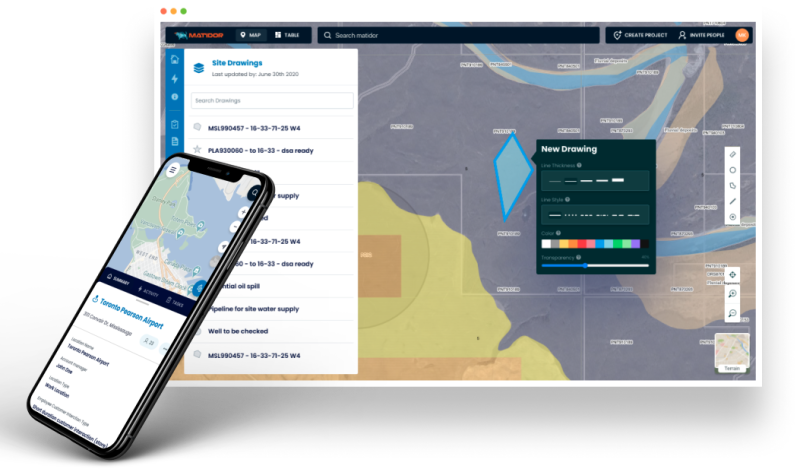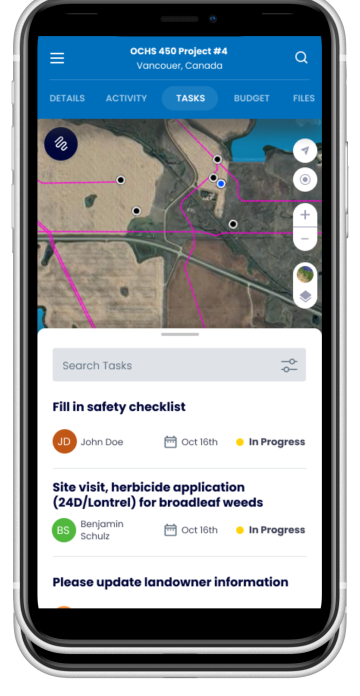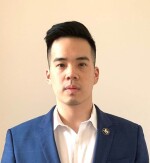Tell us a little about yourself. What's your story? Where did you grow up, what did you like in school, what did you think you would do when you grew up?
I grew up in a suburban neighborhood in Vancouver and was constantly intrigued by different careers. I remember wanting to be a chemist, scientist, and even an archaeologist after watching reruns of Indiana Jones on TV. However, my father has been an influential figure in my life and seeing him being an entrepreneur for most of his career inspired me to pursue this path. After graduating from The University of British Colombia with a Chemistry degree, I worked as a lab technician for a couple of months before growing tired of doing repetitive tasks every day. I decided to do something that was out of my comfort zone: door-to-door sales. I was hired and recruited into a consulting firm in B2B sales, which required me to go to different small businesses to sell internet and phone solutions. I dealt with a lot of rejection, objection, and setbacks, but the challenges ultimately allowed me to develop the skillset necessary to identify a customer’s pain and build up my sales ability. During my tenure, I broke several company records for top sales and managed over 20 sales agents until moving to the residential sector. There, I worked 10 to 12 hours a day knocking on doors until leaving the company in 2016. I left primarily because of incidents where I had built rapport with my client but the backend installers were unable to fulfill their expectations of switching over; I didn’t want to be in a position where I couldn’t control how my customers felt about me.
I know that earlier in your career, you were based in Shanghai and helped develop a 3D VR visualization platform called Morfus. Tell me about that—what did the technology do, and what was your role in that venture? Are you still involved with the company?
I cofounded Morfus as CEO with two of my sales colleagues. We discussed what we could work on outside of our corporate sales jobs and realized that VR was a growing market. We envisioned a cloud-based 3D rendering platform that could take in any 2D or 3D floorplans and schematics and render them into a fully immersive 3D walkthrough using mobile VR. Back then, we wanted to be the first to market with a full 3D walk-through on mobile, since most mobile VR solutions back then were only done through 360° footages and users could only teleport from point A to B inside the rendering. The goal was to solve spatial awareness when looking at prebuilt housing and buildings, which to this day can still only be done through a standalone headset such as Oculus or Vive. I oversaw all business development activities for the company, including sales, marketing, and prospecting different architectural and interior design firms looking for a pilot. We had some success and were able to get into an accelerator program in Shanghai called Chinaccelerator that was under the venture fund SOSV based in the US. However, after working in China for a year and a half we realized we built a solution to a problem that did not exist, as mobile was not a necessity for architectural firms. So, I left Shanghai and decided to pass over the day-to-day operations to my other co-founder for a little break until an opportunity came around.
Your next move was to cofound Matidor. For those who aren’t familiar, what service or solution does Matidor provide to the energy industry? Is Matidor a fairly unique player in its space, or do you have major competitors—and if the latter, what do you do that differentiates you from the rest of the pack?
Matidor is a map-based project management and collaboration platform that has been developed to directly address a need in the field services industry. It helps facilitate the complex relationship between environmental consultants and their clients (operators, municipalities, energy producers, etc.), by enabling seamless collaboration on location-based projects between all parties. With all key project information available in one place, Matidor allows for better visualization and management between different stakeholders with greater ease and efficiency.
From the perspective of field services consultants, Matidor improves their operational efficiency by organizing all key project information into one secure, centralized database, eliminating the need to switch between multiple fragmented tools. With its user-friendly GIS tools and easy integration with third-party data sources (such as point of interest, site imagery, and mobile asset tracking), Matidor makes it easy for nontechnical users to update and share geospatial information.

Matidor is the only software product that combines mapping and project management with controlled, two-way sharing. Our constant improvement for product integration with other data sources has also been a driver in differentiating ourselves. On top of this our business model is charging per project location. By avoiding the pay-per-user model commonly used by similar software providers, we keep our clients’ costs lower, while also protecting their security and privacy. This model allows the number of Matidor users to grow exponentially as clients bring other stakeholders on board, which has been a major differentiator when compared to other software solutions.
What was your inspiration for cofounding Matidor? How did the journey get started, how has it been going, and what do you see happening in the future? Ten years from now, where will technology be?
I was finishing up with Morfus in late 2018 and decided to come back to Vancouver for a quick break while looking for new opportunities. I had known my soon-to-be cofounder Vincent for a while, and he came to me with this idea to improve management of location-based projects for the environmental sector using an intuitive map-based platform that was goes beyond the conventional GIS tool. I believed in his vision and recognized a problem in the market where projects were still being managed using spreadsheets and archaic legacy software. Vincent was a former technical lead back at Google Earth and had spent time at Dassault Systèmes as a product manager for their mining software. He observed that the lack of collaboration was a huge problem with consultants, costing them billions of dollars each year.

Over the past year, we have gained six clients in the energy sector. We have also built a strong case study with an oil and gas operator based out of Calgary, helping them manage upwards of 500 sites, compared to 100 sites before using Matidor. We’ve seen more than 90 minutes of daily active users with over 1,000 daily activities being performed on our platform. We’ve also seen an astounding $50 million in budgeted activities being tracked through the platform to date. On top of this, we have identified and are openly working with environmental consultants to offer a better tool for collaboration and reporting to their clients.
We were also able to grow our team this year to 20 people, which was a huge jump from the five employees we started with in 2020.
As we work more with partners and data providers, we’ll continue to roll out new integrations and functionalities, such as the ability for real-time geotagging. We recently signed a managed delivery partnership with Unity, which is primarily a cross-platform game engine, created to build 2D and 3D objects and environments. We feel this partnership fits nicely as we plan to incorporate and bridge the gap between geospatial data with 3D visualization.
In 10 years, our goal is to make Matidor the go-to for any location-based data visualization whether you are in agriculture, oil and gas, construction, mining, or even urban planning.
You and your co-founder are both recognized and awarded entrepreneurs. What were some of the highs and lows of that journey? Have you had any ideas or plans that failed? Give us more info on some of the wins, as well, like the Tech Crunch Startup Battlefield competition.
Our previous idea didn’t take off; it was a similar product to Matidor but with geospatial AR behind it. The product was supposed to be able to allow individuals to deploy a 3D model to a real-life location just by holding up their phones; for example, they could see a 3D model of a building superimposed on empty land for spatial awareness. We also took on a project with one of my friends who was in the autobody industry looking to build a B2C app that connected drivers with vehicle damage to nearby autobody shops using computer visioning diagnostics. Both ventures were early on and we took many lessons from those; for the geospatial AR company, it was not falling into assumptions, as there was not a good product-market fit in the beginning. A good indicator was that no one was willing to pay for the solution; we took that as a sign that VRAR was still a bit too early.
One of our biggest high points would be last year when COVID-19 emerged. I saw an opportunity to be creative with Matidor’s functionalities and build out a way for emergency response and health authorities to track geospatially quarantined areas and better deploy frontline workers. We interviewed first responders and looked into other areas of EH&S including hazard broadcasting for disaster relief. The Digital Supercluster is a program that helps start-ups to partner or collaborate with a consortium of bigger corporations to tackle real-life problems and stimulate economic growth in the digital sector in Canada, and one of their COVID-19 challenges was map-oriented. Our original proposal failed, but we managed to build a relationship and secure a part in building out a pandemic predictive modeling platform. This also helped us build a relationship with Unity and became the foundation for our recent partnership.
Our second-place win at last year’s Startup Battlefield from TechCrunch Disrupt was something off my bucket list, as this was the so-called Olympics of start-up competition due to its reputation and network. Last year was the first time that TechCrunch Startup Battlefield was virtual, and we were the first company to present virtually out of the 20 selected semi-finalists from all over the round. It was an extra competitive year being a virtual event, so the applicant pool expanded globally. It was a proud moment when we made it through to the final companies and were able to pitch to a panel of judges from top venture capital funds in San Francisco like Accel, Y Combinator, and Kleiner Perkins. Even though we ended up second, the recognition going from over 1,000 applicants globally to the semifinals then finally the final five companies garnered us a lot of press and attention from clients, partners, and joining the Battlefield alumni group. Previous companies that have pitched on this stage included Dropbox and Mint, to name a few.
Where do you see this industry going in the future, and how do you think its destiny is intertwined with that of renewables and alternative energy? Much has also been saying of an increasing need for the industry to be digital and automated. How does Matidor fit into an evolving, transforming energy landscape?
I believe this sector is shifting towards a more sustainable approach and looking for ways to strive towards being carbon-neutral by 2050 even though that may prove to be a hard task. According to a recent study from Deloitte Insights, 90% of oil and gas executives have stated their planned initiative towards decarbonization through increasing energy and operational efficiencies. Operational efficiencies can be viewed as implementing technologies or improving collaboration to move the industry forward given last year’s setbacks. New technology involving being able to monitor or reduce potential GHG emissions has been quite popular, and Matidor can help visualize these captured data geospatially and use our experience in building predictive modeling on a map to see potential effects and provide a more insightful response.
The cyclicality and volatility of the oil and gas industry, stagnating salaries, ongoing layoffs, and brutal cost cuts are just a few of the challenges young professionals wanting to enter this business are facing. Many are disillusioned and unsure how to proceed. What kind of advice can you offer to them?
My advice would be to look for ways internally, even within your organization, to explore more sustainable practices, and if you are planning to enter this industry be prepared to look for new ways to adapt to the changing landscape. Our company was heavily affected as well; a lot of our deals fell through and clients did not want to even consider us when their budgets were cut. We had to explore other forms of partnership and integration while looking into a more environmentally driven use case for our platform. My advice would be if you are intrigued by this sector, spend the time to understand how the sector will shift at a macro level given the demand for other alternative energy sources.

Sean Huang is a Vancouver-based serial entrepreneur and businessman who has founded three startups and has more than 10 years of experience in sales and business development. From door-to-door sales with Telus to handling enterprise accounts, Sean was one of the fastest salesmen in his marketing firm to get promoted to senior sales manager for B2B campaigns. In 2015, Sean cofounded his first startup in the mobile VR space and after some initial traction, the company was accepted into a cross-border accelerator program in Shanghai. Currently, Mr. Huang heads business development for Matidor, a geospatial project collaboration tool for environmental consultants working with energy exploration companies. Recently, Matidor finished second place in the Tech Crunch Startup Battlefield competition out of over 1,000 applicants.


